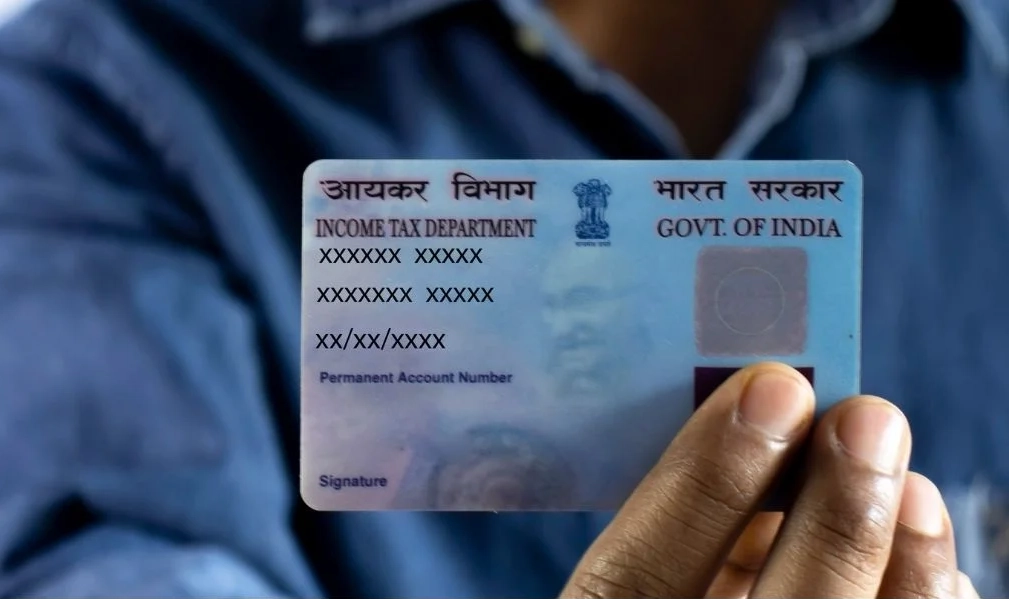If you’re an NRI wondering whether you really need a PAN card in India, you’re not alone. Many NRIs think of PAN as something only for taxpayers living in India. But that’s far from the truth. In reality, your Permanent Account Number (PAN) is like your financial fingerprint in India—it helps you manage taxes, open accounts, buy property, and invest.
Let’s break it all down step by step. This guide explains why PAN matters for NRIs, how to apply for it online or offline, what documents you’ll need, and how to fix or update your card if something goes wrong.
We’ll keep things simple and clear, so even if you’ve never dealt with Indian tax systems before, you’ll understand exactly what to do.
What Is a PAN Card?
Think of your PAN card as your financial ID issued by the Income Tax Department of India. It’s a 10-character alphanumeric code, printed on a laminated card (and available digitally as an ePAN).
Every individual, business, or entity that earns or transacts financially in India must have one. The number helps the government track tax-related transactions—like buying a flat, investing in shares, or opening an NRE/NRO bank account.
If your income or investments are connected to India, you need a PAN. Simple as that.
Why NRIs Need a PAN Card
An NRI (Non-Resident Indian) might not live in India, but if you have financial links here, the PAN becomes essential. Let’s look at a few real-world examples:
1. Buying or Selling Property in India
Imagine you own an apartment in Pune and want to sell it. Even if you live in Canada, the buyer must quote your PAN number while paying you. Without it, tax deduction (TDS) on the property sale can’t be processed properly.
2. Opening NRE or NRO Bank Accounts
Indian banks will ask for your PAN card before they open your NRE (Non-Resident External) or NRO (Non-Resident Ordinary) account. It’s their way to verify your tax identity.
3. Investing in Indian Mutual Funds or Shares
Want to invest in mutual funds, stocks, or even fixed deposits? The Securities and Exchange Board of India (SEBI) mandates PAN for these activities.
4. Filing Income Tax Returns in India
If you earn rent from your Indian property or dividends from Indian companies, you must file an Income Tax Return (ITR). To do that, you need a PAN.
5. Receiving Payments or Claiming Tax Refunds
Without PAN, you’ll face higher TDS (Tax Deducted at Source) rates. And you won’t be able to claim refunds easily.
In short, if you earn, invest, or sell something in India—you’ll need a PAN card.
Who Qualifies as an NRI for PAN Application
Before applying, make sure you qualify as an NRI. According to Indian tax rules, you’re considered an NRI if:
- You live outside India for more than 182 days in a financial year, or
- You’ve gone abroad for employment or business, or
- You’re settled abroad permanently.
If any of the above applies, you fall under the NRI category.
Types of PAN Application Forms for NRIs
Depending on your citizenship and situation, you’ll use one of these forms:
| Type of Applicant | Form to Use | Description |
|---|---|---|
| Indian Citizen (including NRIs) | Form 49A | For Indian passport holders (even if they live abroad) |
| Foreign Citizen / OCI / PIO | Form 49AA | For foreign nationals or Overseas Citizens of India |
Both forms are available on two official government-approved websites:
- Protean eGov (formerly NSDL) – protean-tinpan.com
- UTIITSL – pan.utiitsl.com
Documents Required for PAN Card (for NRIs)
You’ll need three main categories of documents: Proof of Identity, Proof of Address, and Proof of Date of Birth.
Here’s a simplified list.
1. Proof of Identity (any one of these):
- Copy of valid Indian passport
- Overseas citizenship card (OCI) or PIO card
- Copy of Aadhaar card (if applicable)
2. Proof of Address (any one of these):
- Indian or foreign passport copy
- Bank account statement from your country of residence
- NRE/NRO bank account statement (showing at least two transactions in the last six months, attested by the bank or Indian Embassy)
3. Proof of Date of Birth (any one of these):
- Passport
- Birth certificate
- Driving license
Tip: Always make sure your documents are self-attested and, if required, notarized or attested by the Indian Embassy or High Commission.
How to Apply for a PAN Card Online (Step-by-Step for NRIs)
The good news? You don’t need to fly to India to apply for a PAN card. The process is entirely online.
Here’s how you can do it.
Step 1: Visit the Official Website
Go to protean-tinpan.com or pan.utiitsl.com.
Choose “Apply for a New PAN (Form 49A or 49AA)” depending on your category.
Step 2: Select Your Application Type
Pick “Individual” and choose your citizenship category—Indian or Foreign.
If you’re an Indian citizen living abroad, choose Form 49A.
Step 3: Fill in Basic Details
You’ll be asked to enter:
- Full name (as per passport)
- Date of birth
- Email ID and mobile number
- Citizenship and source of income
- Communication address (foreign or Indian)
You’ll get a token number once you register. Save it—it lets you continue later if you exit the form.
Step 4: Upload Documents
Upload scanned copies of your passport, proof of address, and a passport-size photo.
If you’re using e-sign or Aadhaar-based verification, no physical submission is needed.
Step 5: Pay the Fees
- If your communication address is in India: ₹107
- If it’s outside India: ₹994 (includes courier charges)
Payment can be made online through credit/debit cards or net banking.
Step 6: Submit and Verify
Once the payment is done, you’ll get an acknowledgment receipt.
Download it, sign it, and mail it (if required) to the address mentioned on the form.
Within 10–15 working days, your PAN is processed. You’ll receive your ePAN via email and the physical PAN card by post or courier.
How to Apply for a PAN Card Offline
If you prefer the traditional route, you can apply offline through authorized centers in India.
- Download Form 49A (for Indian citizens) or Form 49AA (for foreign citizens).
- Fill out the form carefully in black ink.
- Attach self-attested photocopies of your documents.
- Paste two recent passport-size photographs.
- Sign within the specified boxes (signature placement matters!).
- Send the form and documents to the Protean or UTIITSL office address mentioned on their website.
Once verified, you’ll get your PAN card in the mail.
Fees, Timelines, and Delivery
- Processing fee: ₹107 (Indian address) or ₹994 (foreign address)
- Timeline: 10–15 working days after submission
- Mode of delivery:
- ePAN: Sent via email (within 48 hours after processing)
- Physical PAN: Delivered by post to the address you mentioned
If you apply from abroad, factor in a few extra days for international delivery.
Common Mistakes NRIs Should Avoid
Even small errors can delay your PAN approval. Watch out for these:
- Incorrect signature placement – It must be within the box provided.
- Mismatched names – Ensure your name matches across all documents.
- Missing attestation – If your documents aren’t notarized or embassy-attested, your application may get rejected.
- Invalid AO Code – Always use the correct International Taxation AO Code for NRIs.
- Unclear scanned copies – Blurry documents can cause rejection.
Example: If your bank statement isn’t stamped properly or lacks two transactions, it won’t be accepted. Think of it like submitting a passport photo that’s too dark—it’s technically valid, but not usable.
How to Make Corrections or Reprint Your PAN Card
If you already have a PAN but need to change something—like your address, name, or photo—you can request a correction or reprint online.
Here’s how:
- Go to the Protean website.
- Click “Changes or Correction in PAN Data”.
- Choose “Individual” and enter your current PAN number.
- Fill in only the fields you want to update.
- Upload supporting proof for the changes.
- Pay the applicable fee.
- Submit the form online and verify using OTP (e-KYC).
You’ll receive your updated ePAN within 2–3 hours, and a physical copy later by post.
Penalties and Important Rules to Remember
- Only one PAN per person: Having multiple PAN cards can attract a ₹10,000 penalty under Section 272B of the Income Tax Act.
- Keep your PAN updated: Any name or address change should be reflected in your PAN to avoid mismatches with banks or tax records.
- Aadhaar linking: NRIs don’t need to link PAN with Aadhaar, but they can do it voluntarily.
- Inactive PAN: If unused for years, your PAN won’t expire but might need reactivation through an update.
PAN for Different NRI Scenarios
1. NRIs Owning Property in India
When selling property, 1% to 20% TDS is deducted based on the transaction value. Having a PAN ensures correct tax credit and refund.
2. NRIs Investing in Mutual Funds
All mutual fund houses require PAN to comply with SEBI’s KYC norms. Without PAN, you can’t invest or redeem units.
3. NRIs with Indian Bank Accounts
Banks ask for PAN before allowing large deposits or withdrawals. It’s their way of maintaining compliance with Indian tax laws.
4. Returning NRIs
If you’ve returned to India permanently, your PAN remains valid. Just update your address and status (Resident) to keep records accurate.
Example Scenario:
Let’s say Aarav, an NRI living in Singapore, wants to invest in Indian mutual funds. He doesn’t have a PAN yet.
He visits the Protean website, fills out Form 49A, uploads his passport and NRE statement, pays ₹994, and completes the e-sign process. Within 10 days, he receives his ePAN by email.
He uses it to open an NRE account and start investing in Indian funds—all without setting foot in India.
That’s how easy the process can be if done correctly.
PAN vs ePAN: What’s the Difference?
Both represent the same 10-digit number. The ePAN is a soft copy, digitally signed by the Income Tax Department.
It’s legally valid for KYC, property transactions, and tax filings.
If you’ve misplaced your physical card, just use your ePAN—it works the same way.
Tracking Your PAN Application
After submitting your PAN form, you’ll receive a 15-digit acknowledgment number. You can track your status anytime at:
Just enter your acknowledgment number, and you’ll see whether your PAN is being processed, dispatched, or delivered.
Quick Recap: PAN Card for NRIs in a Nutshell
| Step | What to Do |
|---|---|
| 1 | Choose your form: 49A (Indian citizen) or 49AA (Foreign citizen) |
| 2 | Gather documents: Passport, proof of address, bank statement |
| 3 | Apply online via Protean or UTIITSL |
| 4 | Pay fees (₹107 in India / ₹994 abroad) |
| 5 | Verify using e-sign or mail documents |
| 6 | Receive ePAN in 2–3 days; physical card by courier |
Final Thoughts
Getting a PAN card as an NRI isn’t complicated once you know the steps. Think of it like getting a universal key—it opens doors to your financial activities in India, from taxes to investments.
Whether you’re buying a home in Mumbai, opening an NRE account, or filing your Indian income tax return, your PAN ensures everything stays legal and transparent.
So, if you haven’t applied yet, don’t wait. It takes less than 15 minutes online and saves you hours of paperwork later.
Your PAN card isn’t just a piece of plastic—it’s your identity in India’s financial system. And for every NRI, that’s one document worth having.


0 Comments